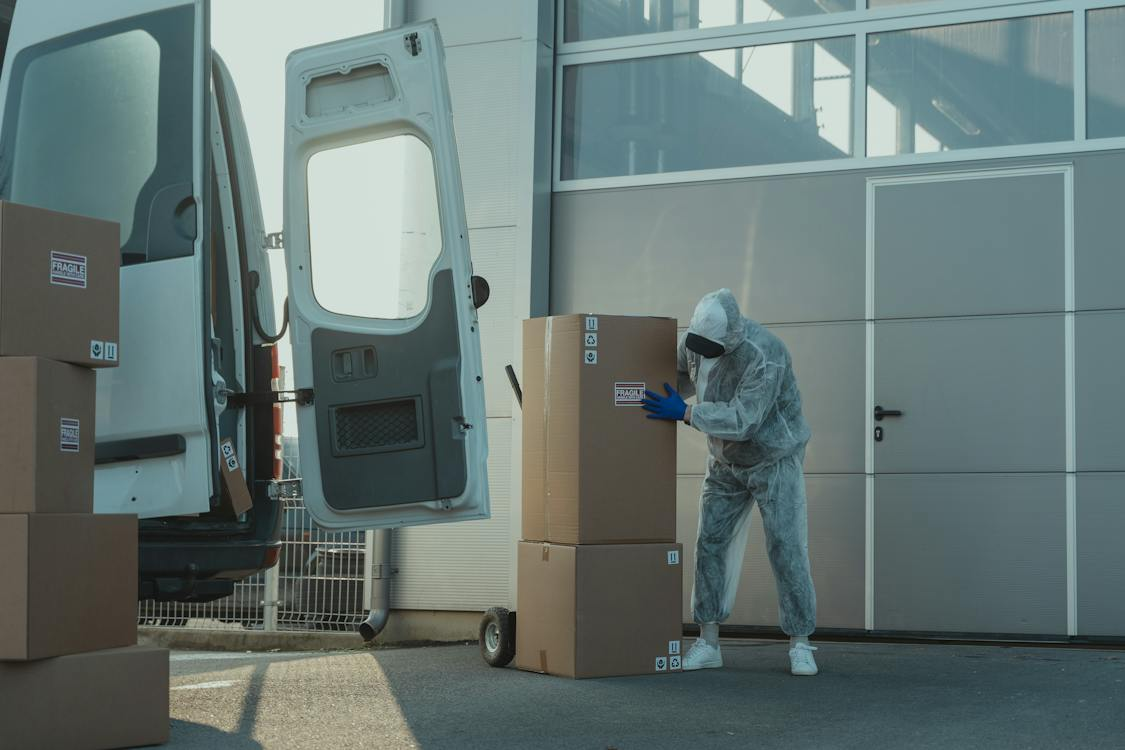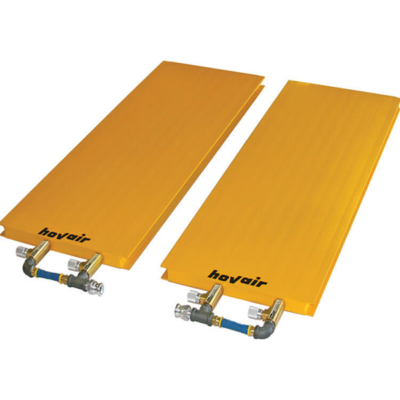Pharmaceutical facilities play a critical role in producing and distributing life-saving medications and healthcare products. However, these facilities face unique material handling challenges that can impact efficiency, compliance, and product quality.
Whether it is the movement, storage, or processing of raw materials, intermediates, and finished products, the right material handling equipment is the key to maintaining precision, efficiency, and safety within a highly regulated and specialized environment.
Keep reading to gain insights into the key material handling challenges encountered in pharmaceutical facilities, along with solutions to overcome them. Learn how Hovair Systems’ heavy load handling systems are helping pharmaceutical facilities ensure safety, seamless operations, and adherence to industry standards.
Regulatory Compliance
Pharmaceutical facilities are subject to stringent regulatory requirements set forth by agencies such as the FDA (Food and Drug Administration) and EMA (European Medicines Agency).
Compliance with regulations such as cGMP (current Good Manufacturing Practice) is essential to ensure the safety, efficacy, and quality of pharmaceutical products.
Material handling processes must adhere to strict guidelines to prevent contamination, cross-contamination, and product mix-ups.
Product Sensitivity and Fragility
Many pharmaceutical products, especially biologics and vaccines, are sensitive to environmental conditions such as temperature, humidity, and light.
Additionally, some medications are fragile and prone to damage during handling and transport. Ensuring the integrity and stability of these products throughout the supply chain is paramount to maintaining their efficacy and safety.
Material handling equipment must be designed to minimize product exposure to adverse conditions and prevent physical damage. Solutions such as temperature-controlled storage areas, shock-absorbent packaging materials, and gentle handling conveyors help protect sensitive pharmaceutical products from degradation and maintain their quality.
High Value and High Risk
Pharmaceutical products are often high value and high risk, requiring meticulous handling and security measures throughout the supply chain.
Material handling processes must prioritize product safety and security to prevent theft, diversion, or tampering. Access control, surveillance systems, and tamper-evident packaging are essential safeguards to protect pharmaceutical products from unauthorized access or tampering.
Additionally, staff training and awareness programs help mitigate the risk of internal threats and ensure adherence to security protocols.
Batch Size Variability
Pharmaceutical manufacturing often involves batch production, with each batch varying in size and composition. Material handling systems must be flexible and scalable to accommodate batch size variability and changing production demands.

Cleanroom Requirements
Pharmaceutical manufacturing facilities typically include cleanrooms or controlled environments to prevent contamination and maintain product purity.
Material handling equipment used within cleanroom environments must meet stringent cleanliness and sterility requirements. Regular cleaning and disinfection protocols are essential to ensure compliance with cleanliness standards and prevent microbial contamination.
Space Constraints and Facility Layout
Pharmaceutical facilities often operate in confined spaces with limited floor space and complex layouts. Optimizing material handling workflows within these constraints is challenging but essential to maximizing operational efficiency and productivity.
Facilities must carefully plan their layout to minimize material movements, reduce congestion, and streamline processes. By optimizing facility layout and workflow design, pharmaceutical facilities can enhance throughput, reduce lead times, and improve efficiency.
Worker Safety and Ergonomics
Material handling tasks in pharmaceutical facilities can be physically demanding and repetitive, posing risks of musculoskeletal injuries and worker fatigue. Ensuring the safety and ergonomics of material handling operations is essential to protecting employee health and well-being.
Facilities should invest in ergonomic equipment and tools that help reduce the strain on workers and minimize the risk of injuries. Comprehensive training programs and safety protocols should also be implemented to educate employees on proper lifting techniques and safe material handling practices.

The Solution
Hovair Systems’ air caster material handling solutions provide a comprehensive answer to the complex challenges faced by pharmaceutical facilities. With their innovative air cushion technology, Hovair Systems’ solutions offer precise, frictionless movement of heavy loads, ensuring minimal risk of product contamination, damage, or mishandling.
Our air bearing kits, air beams, air skates, load leveling airbags, and automotive or industrial turntables are designed to meet stringent regulatory requirements and maintain product integrity throughout the material handling process.
Hovair Systems prioritizes operator safety by incorporating ergonomic features and safety controls into their heavy load moving systems, minimizing the risk of workplace injuries.
With their resilience, flexibility, and commitment to quality, Hovair Systems’ material handling equipment empowers pharmaceutical facilities to optimize efficiency, enhance safety, and maintain compliance throughout all stages of operations.
Call now to learn more.
